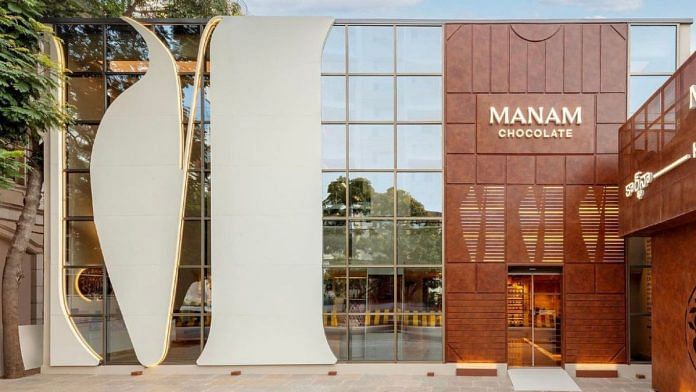Hyderabad: The world of craft chocolate wouldn’t exist without Indians—or their idli grinders. It’s what chocolatiers use to grind down cacao beans, usually sourced from West Africa or Latin America. And now, this Hyderabad-based craft chocolate company wants to put the Indian cacao bean on the chocolate map.
Manam Chocolate takes chocolate-making to a whole new level. Not only is it a confluence of small, artisanal craft and the world of premium luxury, but their chocolate is traceable down to the tree. And their farms in Andhra Pradesh, which produces around 40 per cent of India’s total cacao, is no ordinary farming region. Farmers here wake up and look at NASDAQ on their phones to check the price of cocoa.
At a time when the global shortage of cocoa beans has sent prices through the roof, this chocolate company has been carefully honing its art, ready to show the world what Indian chocolate can be. Its founder, Chaitanya Muppala, is India’s first Level 3 Certified Chocolate Taster from the International Institute of Chocolate and Cacao Tasting.
Launched in August 2023, Manam Chocolate has already made its way to conferences in San Francisco, London, and Amsterdam. It won 17 awards at the 2023 Academy of Chocolate Awards in the UK—one gold, ten silver, five bronzes. It was also crowned the “Overall Winner” in the Brand Experience category.
Just a few years ago, there wasn’t a single bar of craft chocolate made only from Indian cacao beans. Now, brands like Manam Chocolate, Soklet, Mason & Co are making a name for themselves. The oldest of the lot are Naviluna and Paul And Mike, both established in 2012.
“This is chocolate from India—we’ve made it the way we like it, and we want to encourage the world to look at it the way it has been looking at foreign chocolate,” says Muppala, founder of Distinct Origins and Manam Chocolate, and CEO of Hyderabad’s famous Almond House. “And nothing here is just chocolate. It always has the percentage of cacao in it and talks of its origin. This is not chocolate as you know it. It is chocolate as it should be.”
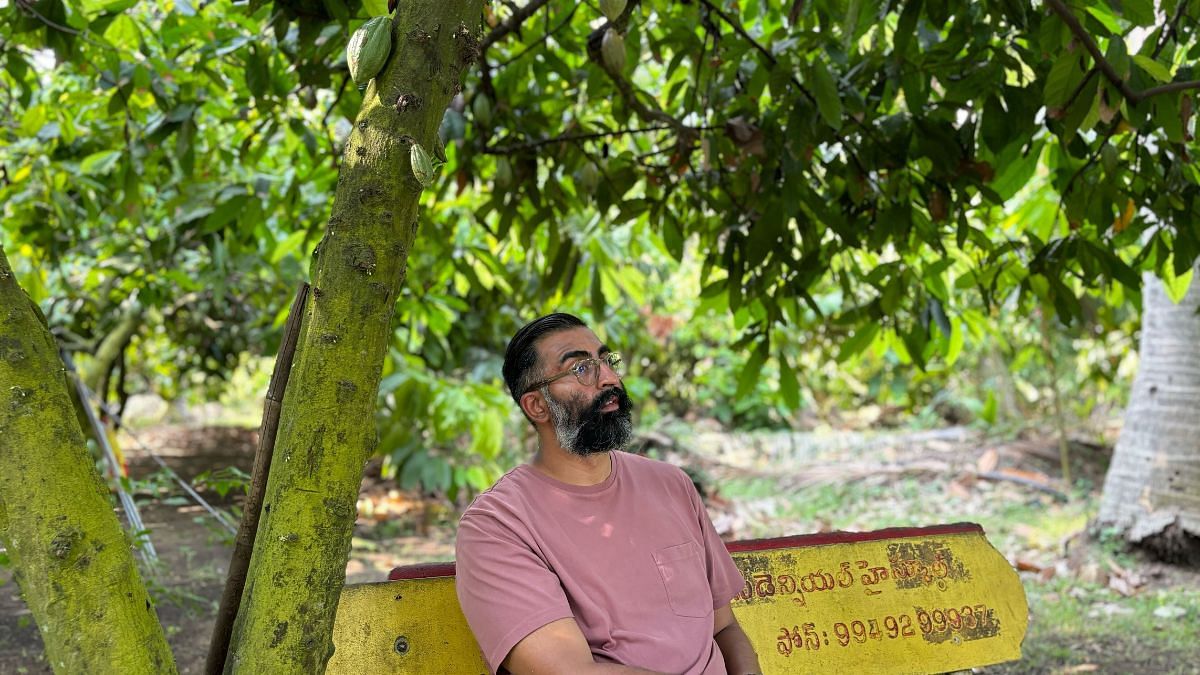
But tired comparisons to Willy Wonka and his chocolate factory don’t do Manam Chocolate justice. Muppala and his colleagues are more like chocolate scientists—meticulously tasting, measuring, observing, taking notes. Nothing is left to chance and everything is by design.
In this supply chain, chocolate travels from bean to bar. In fact, the process starts before the bean is grown by farmer members in the farms of Western Godavari—helmed by Manam Chocolate’s parent company Distinct Origins—and ends at Manam Karkhana in Hyderabad, where it is turned into chocolate bars, bonbons, truffles, pastries, cakes, croissants.
This is chocolate from India—we’ve made it the way we like it, and we want to encourage the world to look at it the way it has been looking at foreign chocolate
– Chaitanya Muppala, founder, Manam Chocolate, Distinct Origins
This isn’t mass-produced chocolate, this is the luxurious world of craft chocolate—packaged in a way that is accessible and engaging. Even if you can’t afford the wide range of products regularly, there’s something here for everyone. The smell of chocolate hits you the second you enter and lingers on your tastebuds. While some customers are worried about having too many options and not being able to make a choice, the people behind Manam Chocolate are clear—the very point is abundance.
“That’s what makes it so exciting for us,” says Muppala. “Craft chocolate is unlike craft gin, wine, whiskey, and coffee, where the movement has happened in other countries. We have the opportunity to lead here in India, it’s such a nascent thing. And the science has only just started.”
Also read: Blue Tokai, Black Baza, Third Wave—Indian entrepreneurs making coffee premium like wine, whiskey
The creative world of craft chocolate
The Coimbatore idli grinder is the unlikely star of the craft chocolate world because it’s the only appliance that can emulate and churn out chocolate like the industrial-style grinders of mass-produced chocolate.
It’s called a stone melanger in the world of chocolate and grinds down cacao beans. Most craft chocolatiers use idli grinders—but Manam Chocolate, which operates at a larger scale than the average craft chocolate maker, uses an industrial-style ball mill.
“My style as a chocolate maker is to make chocolate that is Indian, that we find accessible and relatable—because that’s the market we’re catering to. And what we’re used to is industrial smooth chocolate,” says Muppala, highlighting how Cadbury’s Dairy Milk has dominated the Indian chocolate palate. “We have new tastes and new aspirations as Indians—we don’t need to reduce ourselves. The idea is to establish a category for ourselves and start distancing ourselves from European tags, like Belgian, Swiss, or French chocolate.”
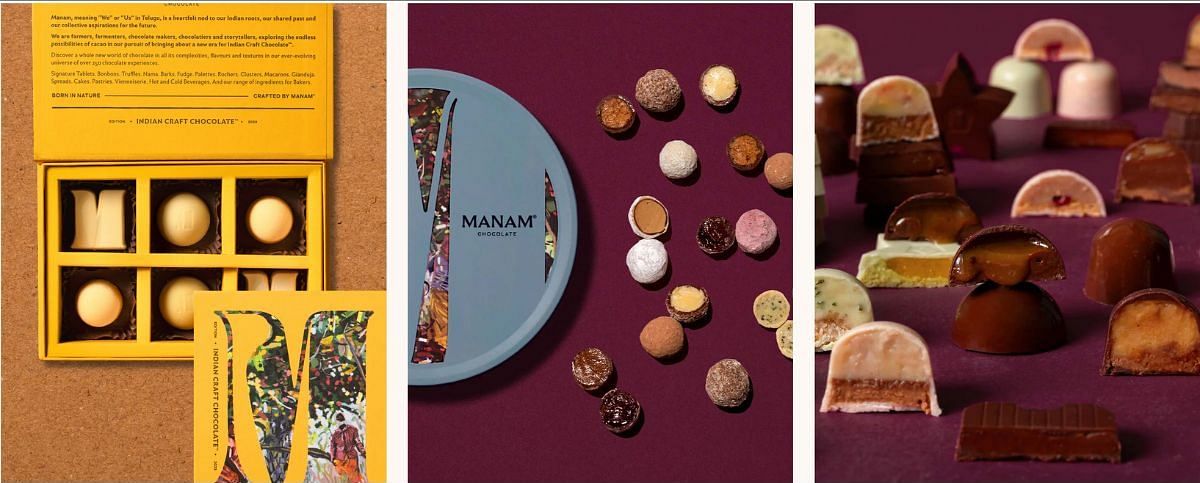
And at its flagship store in Hyderabad, this legacy is displayed loud and clear.
The Coimbatore idli grinder is visible at work with chocolate, which onlookers can see from a balcony overlooking the large cafe. It’s a nod to India’s legacy in craft chocolate. The cafe is designed like a rainforest with cacao-bean-shaped wicker lampshades. At its centre was a recently-deceased cacao tree which couldn’t withstand the transplant from West Godavari to Banjara Hills. The staff used to lovingly play violins and flutes to keep the tree alive.
One thing is clear at Manam Chocolate: everyone who works there is in tune with their love for chocolate.
“It’s all about taking the cacophony of flavours and turning it into a symphony,” says Muppala.
Muppala, the scion of Almond House, has carried over the brand’s gifting and marketing line to Manam Chocolate. And it shows—along with his passion for chocolate and the training he’s gone through. There’s even a dedicated classroom section at the Karkhana, where Muppala holds chocolate profiling sessions and his head chef, Chef Ruby Islam, takes workshops.
“Craft chocolate can be anything and everything. It’s that complexity we’re running after,” says Islam. “That’s why no one has tried to do this before: it’s an expensive affair to have every step of the value chain integrated under one umbrella like Distinct Origins and Manam Chocolate. But it’s also so complex—every day is an adventure,” she smiles.
Behind her, her sous chefs are busy tempering chocolate and moving trays of bonbons to chillers. They’re jittery—the body temperatures of so many people in their workspace can affect the chocolate they’re working with.
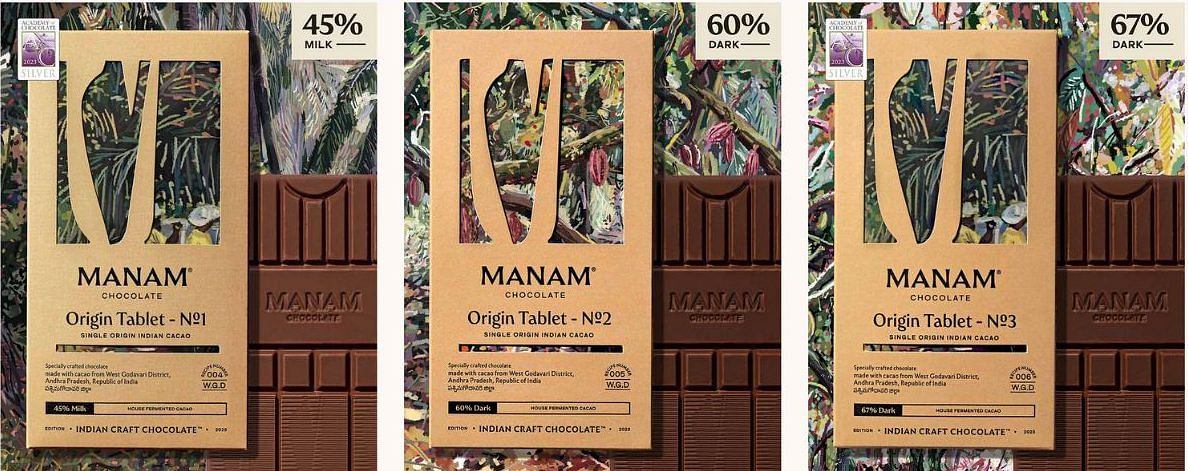
As a chocolatier with over a decade of experience, Chef Islam has always worked with imported chocolate, spending 30 per cent import duty on beans that can be grown locally. But at Manam Chocolate, using Distinct Origins’ beans, she works with 41 different covertures (chocolate with a high percentage of cocoa butter) to create a range of flavour formulations and tries to match the bean’s flavour in her final product. For example, when she and Muppala tasted notes of cherry in one particular kind of bean, she began to use it in black forest pastries—an immovable fixture in every Indian bakery, but this time made even more Indian.
Craft chocolate is unlike craft gin, wine, whiskey, and coffee, where the movement has happened in other countries. We have the opportunity to lead here in India, it’s such a nascent thing. And the science has only just started.
— Chaitanya Muppala, founder, Manam Chocolate, Distinct Origins
She’s expanded into using other local ingredients—like Guntur chillis and Chakkarakeli bananas—in her products. It’s led to dishes like a soft serve banana ice cream and a Guntur chilli and mango bonbon wrapped in white chocolate.
“That’s why Manam Chocolate is so integral to us. It’s for people who’ve grown up having Dairy Milk, or duty-free chocolate, and tasting stuff from outside,” says Islam. “The stuff that people love abroad are not our bestsellers here—our bestsellers are chocolates and flavours that feel more nostalgic. In our offering, we’ll always have something relatable, indulgent, healthy, while also having a collection which is more nuanced for chocolate experts, not just enthusiasts.”
Manam Chocolate is only the latest entrant into this nascent market. Brands like Soklet, Mason & Co, and Naviluna have all become recognisable names over the years. But before 2016, there was no single-origin chocolate bar made from Indian cacao beans—single-origin chocolate is made from beans from one place, usually denoting premium quality.
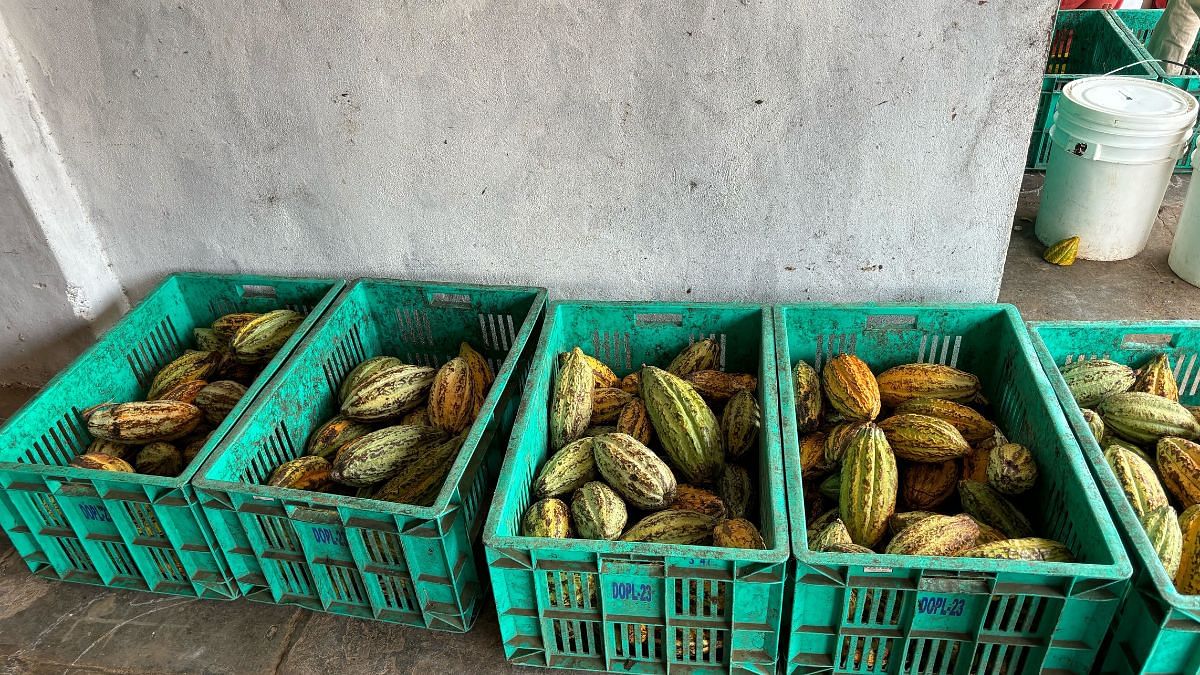
Soklet, run by Karthikeyan Palaniswamy, uses beans from his family’s farms in the Annamalai Hills and is the first tree-to-bar chocolate maker in India. He says other countries have been in the market for a much longer time, but India has enough and more room to grow within the chocolate world.
“What Manam Chocolate is trying to do is showcase an Indian origin and showcase an India story,” says Palaniswamy. “Manam Chocolate by far has had the largest investments in this space—unless you put in serious money, you’re not going to see serious results. And Manam Chocolate is on the right track in that regard.”
India is still a net importer of cacao, producing only about half a per cent of the world’s beans. Of that half per cent, 40 per cent comes from the West Godavari region of Andhra Pradesh, where Muppala has been working with farmers. If the overall acreage goes up, says Palaniswamy, India’s potential is limitless.
“That’s why this moment is so exciting,” says Islam. “We’re finally experimenting with chocolate in India.”
Also read: Tulsi to strawberry—How desi gin from Goa is converting India’s vodka loyalists
Science and skill
In Gangannagudam in Andhra Pradesh, farmer B Venkateswara Rao has been growing crops like cacao and oil palm for decades. But he’s never been more excited to grow them.
Rao is one of Manam Chocolate’s first farmer members and even has little figurines of himself displayed at the Karkhana in Hyderabad. He’s clued into the cacao ecosystem and is well aware of the high prices of beans. But what excites him more is the intentional shift from growing cacao for industrial heavyweights like Cadbury and Campco and growing organic beans for Distinct Origins. It gives him more freedom as a farmer and more involvement in his own produce.

“As a farmer, 100 per cent I feel very happy and satisfied working with Chaitanya for the last three years,” says Rao. He carefully checks the quality of the fruit still growing on his trees—the harvest season has passed, but some pods are still hanging on. “It’s a good person creating a good product for society, and I feel happy to be a part of this project.”
Much like tea, all chocolate comes from the same kind of plant: the cacao plant.
The idea is to establish a category for ourselves and start distancing ourselves from European tags, like Belgian, Swiss, or French chocolate.
— Chaitanya Muppala, founder, Manam Chocolate, Distinct Origins
But a complicated history of colonialism and slavery has muddied the so-called waters, leading to a genetic cesspool of crossbred cacao plants. And some of these landed on Indian shores, which is why India doesn’t have its own distinct cacao bean—yet.
Distinct Origins is out to change some of that. Its ambitious gambit involved not only creating the cleanest cacao bean but also separating and sorting out the various kinds of beans that can grow in India. It’s why Manam’s chocolates come from single-origin plants: all their chocolate can directly be traced back to not just the farmer and his farm, but the exact tree and its bean.
“Everybody can make chocolate. But your chocolate is only as good as your beans are,” says Muppala.
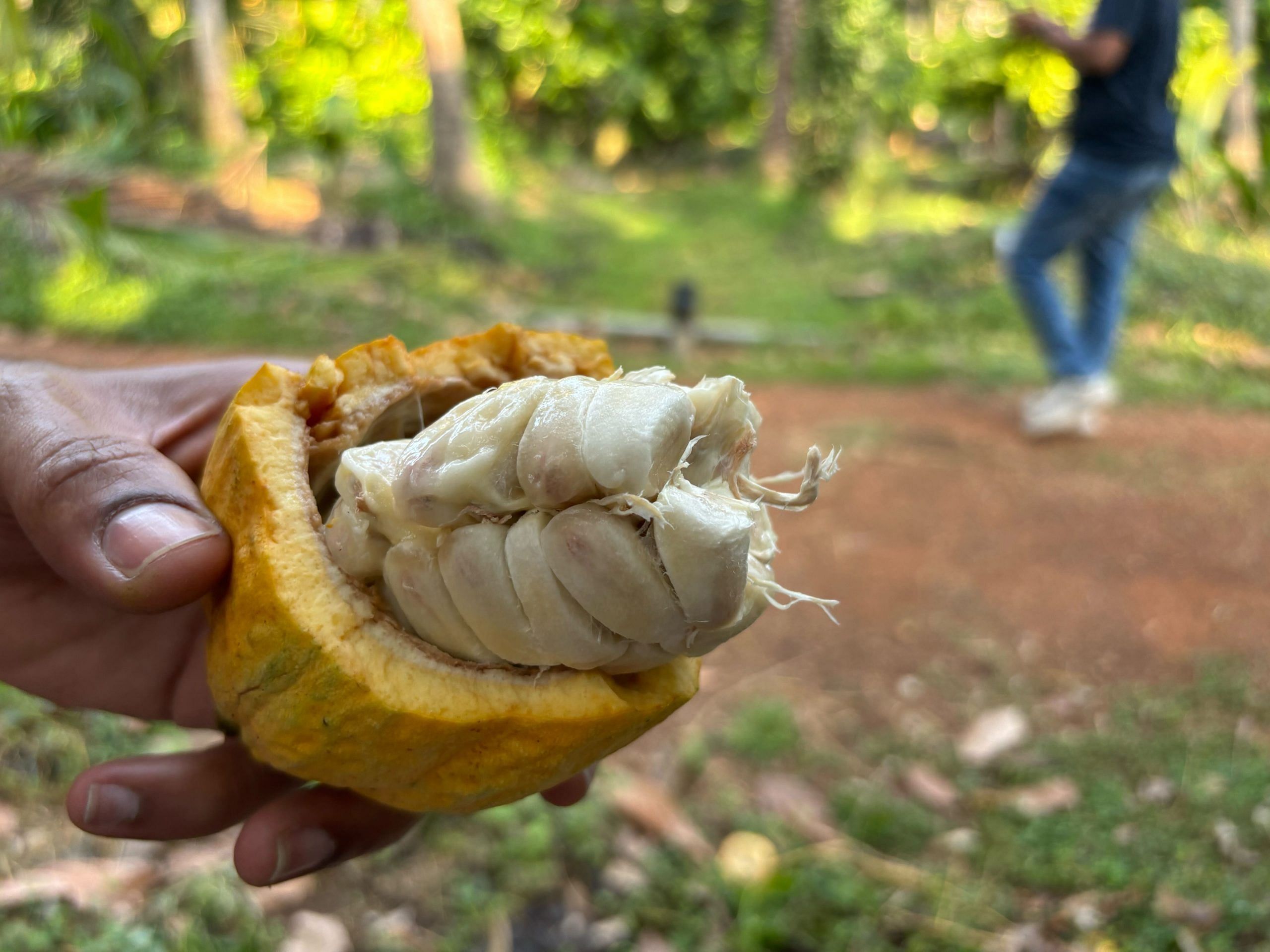
And after an exhaustive process of equal parts research and experimentation, Distinct Origins has figured out multiple points of intervention in what has otherwise been a linear supply chain. Disrupting the procurement side of cacao has allowed them to work directly with farmers.
In the conventional method, farmers harvest, ferment and dry the beans and then sell the beans to traders, who sell en masse to the Cadburys of the world. World over, chocolate makers buy dried beans. But in this supply chain, farmers are encouraged to invest and care for their beans and harvest and sell to Distinct Origins—because they buy fruit, not beans. And at their factory, each step of the fermentation process is carefully monitored.
“We’ve taken the box-based fermentation method typically used in South America, and scienced the sh*t out of it,” says Muppala.
The Distinct Origins Fermentary in Tadikalapudi used to be an old GTC tobacco factory and now wears a hipster, upcycled look. Women sit outside, cracking open cacao pods with wooden clubs and neatly collecting the beans. A dedicated team of male workers regularly measures the core temperatures of the fermentation boxes inside the factory and study three parameters—sugar, acidity and heat—constantly. The heat generated from various stages of the fermentation process affects the complexity of the bean. They even have a whiteboard acting as a cut-test sheet, with neatly laid out beans sliced through the centre to ensure that the fermentation is going to plan.
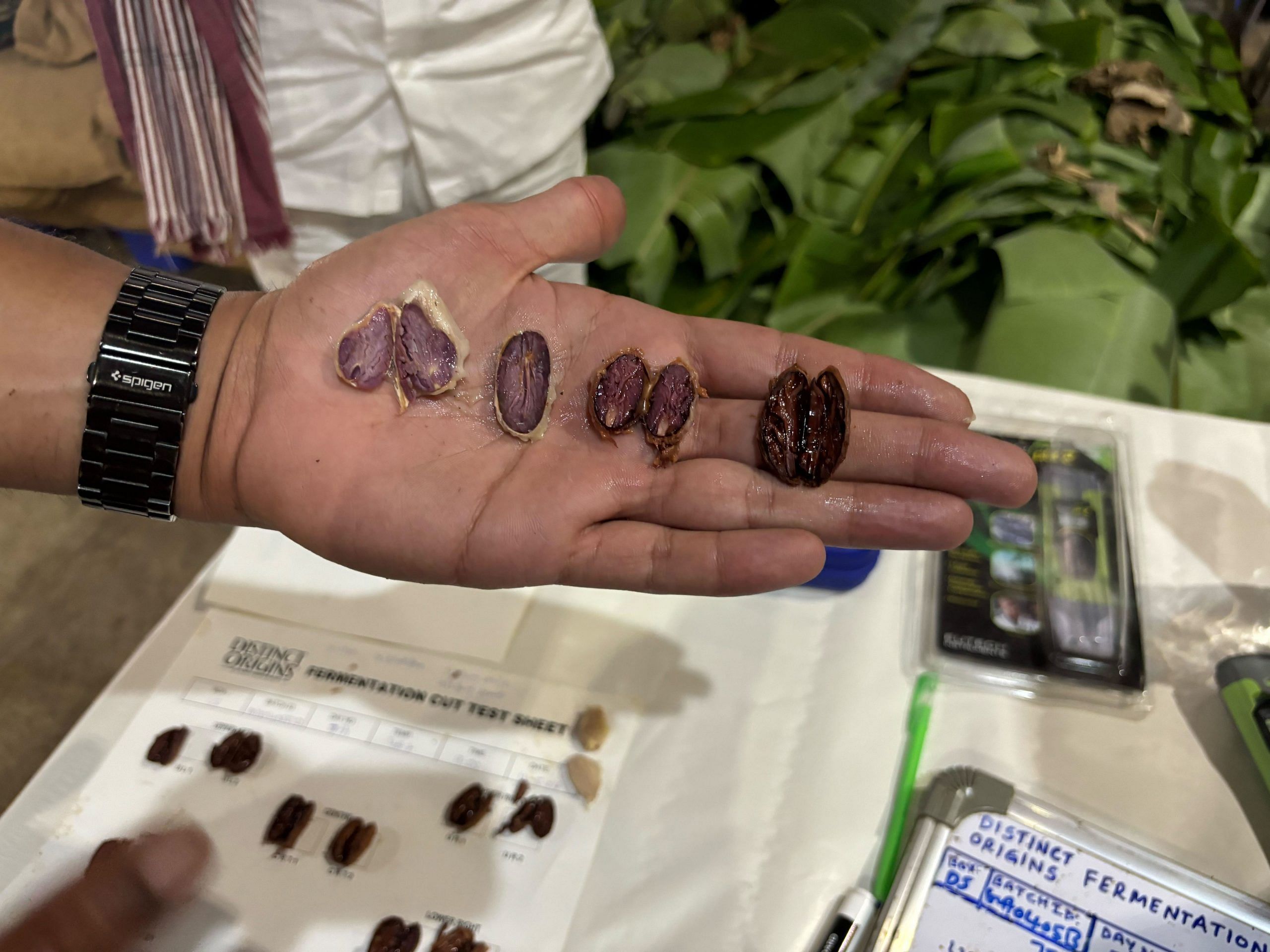
The fermented beans are then laid out to dry in the sun, in a system developed to allow the beans to dry as slowly as possible. One of the reasons why Indian cacao is written off is because beans dried unevenly in the harsh sun are acrid and acidic—something Distinct Origins is careful to avoid.
“Our system is a balance of traditional wisdom and modern technology,” says Muppala. “That’s one of the advantages we have in India—we have access to inexpensive technology that we’ve configured to suit our specific needs.”
And being involved from the farm level has its benefits too. Not only is Distinct Origins helping create a transparent value chain, but it also gives them more creative freedom. If Chef Islam wants to, she can work with the farmer to alter things like soil components to achieve the exact flavour profile for a cacao bean that would perfectly complement a cake or pastry she’d like to make in the future.
The stuff that people love abroad are not our bestsellers here—our bestsellers are chocolates and flavours that feel more nostalgic.
– Ruby Islam, head chef, Manam Chocolate
Distinct Origins has been collecting data for almost three years now. The hope is that after enough data collection, AI and machine learning can step in and do the rest. Chefs and chocolatiers can then use this dream database to match ingredients and flavour profiles to create the best possible confectionaries.
“We accumulate this data, study it, and see how we can improve efficiency and flavour,” says Muppala. “This information also allows chocolate makers to make decisions based on the bean.”
The process doesn’t stop there. Once the dried beans are cleaned and packaged, they make their way back to the Manam Karkhana. And this—behind the glass walls separating the kitchen from the store and cafe—is where the science ends and the art begins.
Also read: Royal, rich, Rajputi—Indian single malt whisky now global cool. A new culture being distilled
Prioritising the farmer, not the market
Muppala holds the dubious distinction of having a police complaint filed against him because of chocolate.
When Manam Chocolate opened in August 2023, there was such a rush for the Karkhana’s opening that it caused traffic violations across the city. Nine months later, the crowd has thinned—but not by much. People of all ages and all walks of life come to the store, fascinated by the world of craft chocolate and the magic of its creation. Here, every store employee is a walking, talking manual on chocolate, full of knowledge about the bean and how the product in the customer’s hand was made.
Everybody can make chocolate. But your chocolate is only as good as your beans are
— Chaitanya Muppala, founder, Manam Chocolate, Distinct Origins
But Muppala demurs from calling himself just a chocolatier or an entrepreneur. There’s absolutely no hesitation to say that Manam Chocolate is at the cutting edge of chocolate design and that Distinct Origins is revolutionising the supply chain, but he’s much happier sitting back and letting the ‘experts’ do their magic—from the farmers to the chefs.
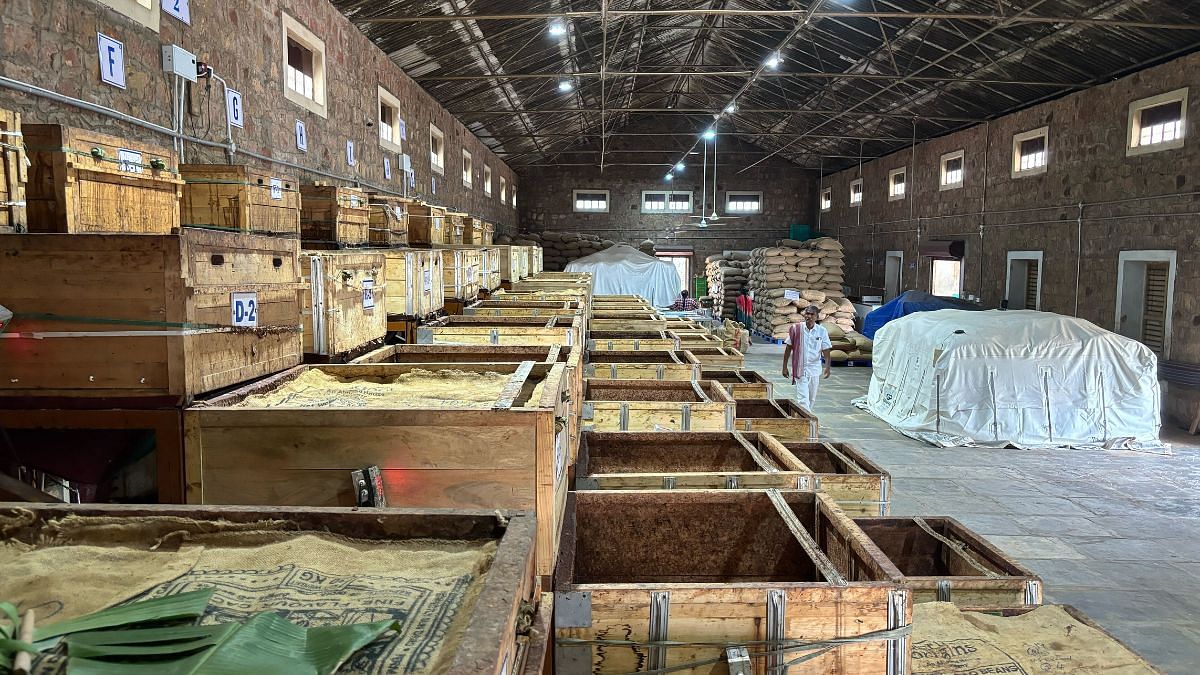
In fact, most craft chocolatiers from across the globe—whom the Manam Chocolate team have met at international conventions like in Amsterdam and San Francisco—are far more interested in their innovations in farming and fermentation. The award-winning chocolate is of secondary interest.
“We’re trying to build a reputation for Indian cacao. But our real value addition is our business model,” says Muppala, who’s very clear that the most meaningful way to impact someone economically is to do it at scale—so that the whole community benefits.
“It starts with that ability to engage with the farming community, with the understanding that the farmer should just focus on the soil and the tree—and subsequent members of the value chain should focus on the bean, and distribute it in an equitable way,” he says.
Distinct Origins was launched in 2019 and has slowly been developing since then. The pandemic was when Muppala could truly dig into the history of chocolate and how to experiment with it. The company is currently working with around 150 farmer members over 3,000 acres and plans on expanding.
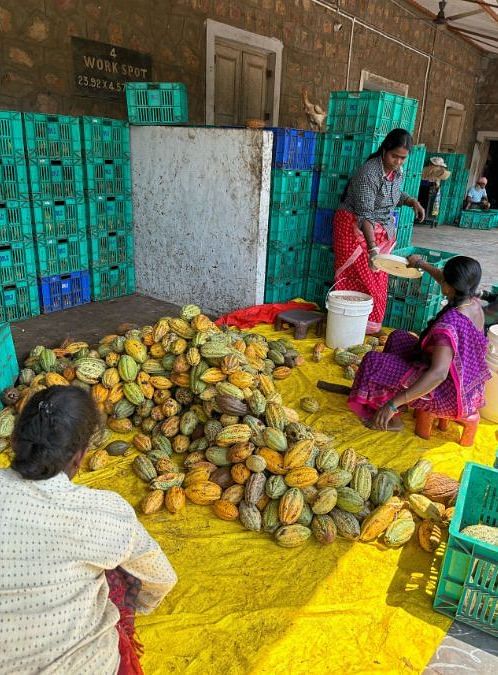
“Our real asset is the community we’re building. We’re serious about the end-to-end transparency of the supply chain, and we’re also focused on community outreach,” he adds. One of their outreach programs included an implements library, in which farmers can borrow tools or tractors from each other.
Muppala concedes that a large part of this is possible only because Manam Chocolate has the money to do it on this scale. But the important thing is creating a transparent link between the farmer and the product: bars of Manam Chocolate now carry QR codes, which a customer can scan to see the blockchain-enabled breadcrumb trail. One can see which tree the fruit was grown on, on whose farm, and when it was harvested and when it was made into chocolate.
And in the case of specific single-origin chocolates, Manam’s bars carry the farmer’s name. So when they won an award for a single-origin bar recently they were in for a sweet surprise.
When the award certificate arrived, it didn’t carry Manam Chocolate’s name but the name of the bean’s farmer: Mr GVS Prasad, West Godavari District, Andhra Pradesh, Republic of India.
(Edited by Theres Sudeep)


